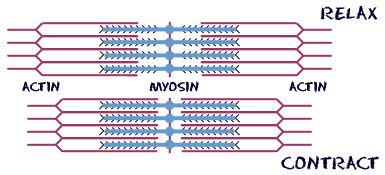The first thing an athlete needs is energy. we consume macronutrients (carbohydrates fats and proteins) for
many different functions, however the primary source of energy that we need and
use is carbohydrates the recommended daily intake should be 55% of what we consume. Carbohydrates can be broken up into two groups; simple and complex.
Simple carbohydrates are sugars Simple carbs are sweet, and soluble in
water. The simplest forms of a carbohydrate are Monosaccharides (ribose glucose fructose galactose) and
Disaccharides. These contain either 1 or 2 of the different sugars. ie: Table
sugar is fructose and glucose fused by a glycosidic bond. This disaccharide is
called sucrose. Each have small atomic structures, which allow the body to
break them down fast, making it the quickest source of energy consumable. Other
food examples; honey, caramel, jams/preserves, chocolate, fizzy drinks.
 |
| Disaccharide |
 |
| monosaccharide |
Complex carbohydrates not only have a starchy
taste, but have a larger atomic structure, the most complex carbohydrates are
called oligosaccharides and polysaccharides. Oligosaccharides have between 3-10 monosaccharides all bonded by glycosidic bonds whilst Polysaccharides have up
to 3000 monosaccharides in 1 structure. due to the scale of these macromolecules, it takes the body much longer to break down. Each of these can
be broken down back into monosaccharides through a process called hydrolysis
(the specific name for the breakdown of glycogen is glycolysis) Food examples:
Potatoes, pasta, rice, bread.
 |
| oligosaccharide |
 |
| Polysaccharide |
Between 1-3 days prior to an endurance event to
save the athlete from feeling uncomfortable, athletes start 'carbo loading’. Exceeding the recommended daily amount, this is a strategy to increase the amount
of fuel stored within the muscles to improve the athlete’s aerobic
endurance. It means athletes have to eat excessive amounts of oligosaccharides
and polysaccharides to be stored as fat; being pasta, potato based meals, rice, and other starchy
foods. (Nutritionist Pro, 2015)
However, gymnasts would not benefit from this
strategy, as their activity requirements are completely different. The runner
will only use their aerobic respiratory system and will need enough energy to
keep them going for at least 2 hours at a fixed rate. The Gymnast will only be
performing each of their activities for less than 5 minutes at a time. And will
be using both aerobic and anaerobic respiratory systems, depending on the exact
movement they wish to complete. I.e.; holding a crucifix position on the
Olympic rings as to running up to a vault.
The gymnast will need smaller amounts of complex
carbohydrates before the event but may want more simple carbohydrates to
provide them with a quick release of energy, to assist their anaerobic respiration.
If the gymnast was to consume
a large amount of complex carbohydrates, it will not be used in full, resulting
in the body storing it as fat, making the gymnast heavier, less agile and less flexible.
Despite this, it is
recommended that over 30% of the recommended daily intake should be fats. Fats
are needed for insulation, it provides buoyancy in water, and certain
micronutrients are only soluble when fat is present. The three different types
of fats are monounsaturated, polyunsaturated and saturated. Unsaturated fats contain unsaturated
acids, which are liquid at room temperature. Monounsaturated and polyunsaturated help to maintain cholesterol levels that are
found in vegetable oils such as olive, rapeseed and sunflower oils, avocados,
nuts and seeds. Too much saturated fat will increase the risk of heart disease
and stroke due to levels of bad cholesterol. Saturated fats remain solid at
room temperature, ie: butter and lard. (British
Nutrition Foundation, 2013)
 |
| Differences in the Atomical Structure of Fats. |
without sufficient exercise such as running or gymnastics, extensive intake of fats over a long period could result in obesity, increased chances of heart attacks, angina or strokes.
Even as a non-athlete, protein is a part of the human DNA. There are Around 50000 in the body, and only 1000 have been studied. Structural proteins support hair and nail growth, transport proteins within the blood, such as haemoglobin, carries oxygen and carbon dioxide around the circulatory system and Regulatory proteins act as hormones, such as insulin Protein is essential for an athlete of any sport for muscle growth and repair, movement and as an emergency energy source. The contractile proteins in the muscle that play a part in the sliding filament theory of muscle contraction are Actin and Myosin. A Gymnast would need a higher daily intake than the recommended 15% of protein to maintain and improve the muscle mass and strength, so they are able to perform to a world-class standard. A marathon runner would not need a huge amount of protein but still needs more than the RDA as they are working their muscles for longer periods; it takes longer for the muscles to replenish.
 |
| Actin and Myosin shown as a relaxed(top) and contracted(bottom) |
Most athletes are told to consume as much protein as possible, however, the body can only contain a certain amount. Therefore excess protein is excreted through faeces and urine.
No comments:
Post a Comment